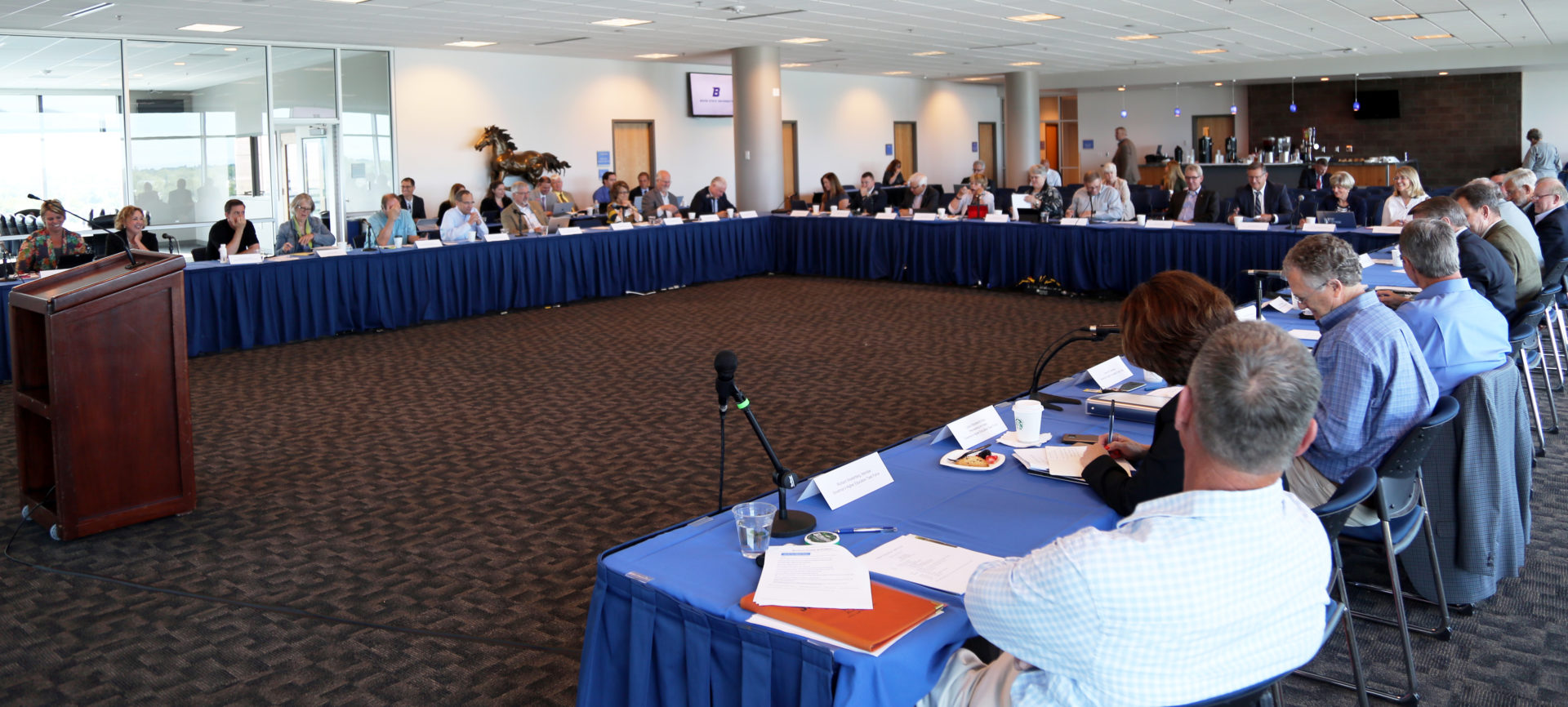Idaho college tuition and fees have increased more than fivefold since 1980, when cost figures are adjusted for inflation.
That’s the conclusion from a new report issued by the Idaho Center for Fiscal Policy, a nonpartisan budget think tank.
“This trend is occurring at a time when workers with college degrees or other forms of postsecondary education are in higher demand than ever,” according to the report. “Underinvestment may weaken the state’s ability to build a strong and sustainable economy for the long term.”

The report also comes as the state renews its focus on its languid college enrollment and graduation rates. A gubernatorial task force is studying the state’s college and university system — in hopes of finding changes that will encourage more high school graduates to pursue a postsecondary degree or certificate. The 36-member group met Friday and is expected to issue recommendations in September.
In one sense, Idaho’s colleges are among the most affordable in the nation. Idaho’s tuition “sticker price” ranks seventh-lowest in the nation, according to the center’s report.
But that favorable ranking masks some other challenges.
- Four of Idaho’s neighbors offer a college education at a lower sticker price: Montana, Nevada, Utah and Wyoming.
- Idaho has shifted much of the cost of higher education off of its tax rolls and onto the backs of students and parents. In 1980, tuition and fees accounted for only 7 percent of college and university funding. In 2016, that figure reached 46 percent. This coincided with a fivefold increase in tuition and fees, when costs are adjusted for inflation.
- As tuition continues to increase, Idaho students are forced to go into debt. Seventy-one percent of Idaho graduates leave college with debt — the second highest percentage in the nation, according to the center’s report. On average, graduates of Idaho’s four-year schools accumulate more than $26,000 of debt.
Affordability was one talking point during Friday’s higher education task force meeting. On Friday, a task force subcommittee said the cost of college is prohibitive for many Idahoans — and that poses a challenge, if the state hopes to boost postsecondary enrollment by a staggering 40,000 students. To meet this goal, Idaho would need to encourage tens of thousands of students from low-income families to continue their education after high school, and these students would be unable to absorb higher out-of-pocket costs.
For many of these students, the current costs of college are daunting, said Sue Lovelace, a Boise-based college adviser who contributed an essay to the center’s report.
“In Idaho, 41 percent of public high school students are economically disadvantaged. These families have no savings for college, and no ability to squeeze out the extra dollars for college from current earnings,” Lovelace wrote. “For many Idaho families, college feels like too big a risk to take.”
